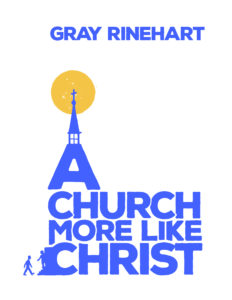Later today, if all goes as scheduled, I’ll be heading up to Roanoke for MystiCon, a great small convention that features one of science fiction and fantasy’s biggest names in this year’s Literary Guest of Honor, George R.R. Martin.
![]()
It’s been several years since I first met Mr. Martin at a small convention here in North Carolina, but unfortunately, unless I run into him at the bar — in which case he’ll be surrounded by a horde of Game of Thrones fans — I probably won’t get within shouting distance of him. Well, maybe shouting distance: my voice carries.
Anyway, I’ll be busy throughout the weekend. If you’re coming (and if you haven’t already registered, I’m sorry to tell you that the convention is sold out so you’ll have to plan on next year’s), here’s a run-down on where you can find me. I feel safe in guaranteeing that you won’t have any trouble finding a seat at my events!
Friday:
- 3:00 p.m. — Workshop, “Face-to-Face Slushpile” — Have you been collecting rejection slips on a science fiction or fantasy novel, but haven’t been able to figure out why? Do you have thick enough skin to take direct, honest, face-to-face critique? Bring your cover letter, the first 5 pages of your story, and your 1- or 2-page synopsis and get real-time feedback from the “Slushmaster General.” First-come, first-served, and volunteers only! If time permits, we may discuss short fiction; however, novels will have first priority. Learn what happens to manuscripts when you send them to a publisher, and how to make yours stand out … in the right way. — Ballroom C
- 8:00 p.m. — Panel, “I’m From Iowa, I Only Work in Outer Space” — What is it like to work in outer space? What tools and supplies are required? What kind of specialized training do you need? Our panelists discuss the challenges posed trying to make an honest day’s wage toiling in the dangerous cold and dark of outer space. — with Tedd Roberts, Jim Beall, and Daniel Wallace — Board Room 1
- 11:30 p.m. — Eye of Argon — The worst science fiction story ever written gets a reading by our brave panel as they compete to go the longest without tripping over a misspelled word or laughing uncontrollably. Audience members are also encouraged to take a chance. Can you keep a straight face, especially when the panel begins acting out the story? — with Michael A. Ventrella, Gail Martin, Peter Prellwitz, and Michael D. Pederson — Ballroom C
Saturday:
- 11:00 a.m. — Signing
- Noon — Reading — Room 533
- 2:00 p.m. — Panel, “The Science & Psychology of Andy Weir’s The Martian” (Moderator) — A lone astronaut is stranded on Mars. How does he survive the harsh Martian climate? How does he maintain his sanity? Our panelists dig into the nuts and bolts of Andy Weir’s excellent science-and-survival tale The Martian. — with Anita Allen, Jim Beall, Tedd Roberts, and Daniel Wallace — Board Room 1
- 3:00 p.m. — Baen Books Traveling Road Show (and Podcast) — It’s a combo slide show/podcast where Baen will showcase upcoming titles and book covers. Come to learn about Baen’s newest releases and possibly win a free book. — with Tony Daniel — Vista Room
Sunday:
- 9:00 a.m. — Non-Denominational Worship Service — Ballroom E
- 10:00 a.m. — Panel, “No More Evil Priests in Red” (Moderator) — Understanding faith in a secular world. It’s easy to depict organized religion as evil, led by greedy rapist scumbags and followed only by the drones and sheeple, but this trope hasn’t been cutting edge for the past forty years. In setting up evil priestly straw men for our postmodern heroes to blow away, authors too often overlook why brilliant people like Boethius could walk smiling to execution, St. Francis could try to protect the animals everyone else wanted to eat, or Hildegard von Bingen could write awe-inspiring music and plays. Let’s talk about books that depict the complexities of religious faith in interesting, insightful ways. — with Tony Daniel, Gail Martin, Peter Prellwitz, Michael A. Ventrella, and Abigail Wallace — Ballroom D
No concert slot for me at MystiCon, and no open filking, so my musical contributions will be limited. I’ll carry my guitar around, though, just to look cool. (I need all the help I can get!)
Hope to see you there — or, if not, hope you have a great weekend!
___
Shameless plug: I will have copies of Distorted Vision and Truths and Lies and Make-Believe, plus other goodies, so flag me down if you want something!

















